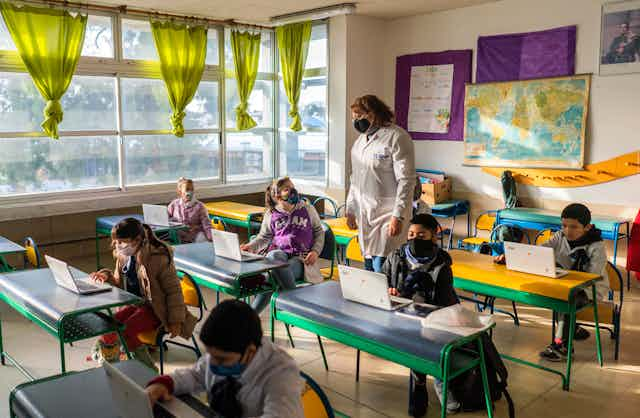Explore the Difficulties Encountering Our Area: Save Temecula Schools
Explore the Difficulties Encountering Our Area: Save Temecula Schools
Blog Article
Crucial Requirements to Take Into Consideration When Reviewing Potential Institutions for Enrollment
When taking into consideration colleges for enrollment, evaluating vital criteria becomes paramount to guaranteeing a conducive discovering atmosphere. Trick aspects such as the positioning of scholastic programs with trainees' goals, the qualifications of professors members, and the effect of course dimensions on customized interest are vital. Furthermore, the presence of robust sources and facilities, alongside a varied series of after-school activities, can substantially boost instructional experiences. Furthermore, the school's society should promote respect and inclusivity to promote a supportive neighborhood. Each of these elements plays a crucial role, however how do they interconnect to form the optimal instructional setting?
Academic Programs
When reviewing potential colleges for enrollment, considering the breadth and depth of their academic programs is extremely important. High-quality academic programs not just establish the academic value a pupil will certainly receive yet additionally influence future chances and career courses. Possible students and their households need to look at the curriculum to ensure it lines up with the trainee's academic rate of interests and job aspirations.
Accreditation is a critical factor, as it represents that the institution fulfills well established standards of quality. Furthermore, the variety obviously offerings, including sophisticated positioning (AP) or Global Baccalaureate (IB) programs, can considerably improve a trainee's understanding experience. Schools with durable scholastic tracks in STEM, humanities, and the arts indicate a dedication to extensive education.
Professors qualifications and student-to-teacher proportions are likewise key signs of scholastic excellence (Save Temecula Schools). Very credentialed instructors and smaller sized course sizes frequently cause more tailored interest and a far better instructional experience. The schedule of academic resources such as collections, research laboratories, and modern technology hubs can even more improve the learning atmosphere.
Evaluating these elements ensures that the selected college offers a rigorous and supportive academic structure, important for promoting intellectual growth and preparing pupils for future success.
Extracurricular Activities
Beyond the scholastic realm, extracurricular tasks play a considerable duty in forming a well-rounded educational experience. These activities give pupils with possibilities to create abilities that expand past the classroom, such as team effort, time, and leadership management. When evaluating possible colleges for enrollment, it is important to take into consideration the variety and top quality of extracurricular programs offered.
A varied variety of activities, including sporting activities, arts, music, argument clubs, and community solution initiatives, can satisfy different passions and skills. Institutions that sustain a wide spectrum of extracurriculars demonstrate a dedication to cultivating alternative growth. Involvement in these tasks can improve college applications and resumes, showcasing a pupil's capability to balance numerous obligations.
It is also vital to analyze the sources and facilities offered for these tasks. High-quality facilities and skilled teachers can substantially affect the performance and pleasure of the programs. Furthermore, take into consideration the level of trainee interaction and the institution's encouragement of engagement. Institutions that actively promote extracurricular involvement usually produce a vivid, inclusive area.
Course Dimensions
One of the important factors to take into consideration when assessing prospective colleges for enrollment is class size. Class dimension substantially affects the high quality of education and learning that a trainee receives.
In addition, smaller class sizes can add to a more natural classroom setting. With fewer students, there is a greater chance for developing solid partnerships between instructors and peers, which can enhance the discovering atmosphere and promote a sense of area. This likewise enables more reliable go now classroom monitoring, as educators can devote more time to preserving a positive and effective atmosphere.

Institution Culture
Understanding the value of college culture is vital when examining prospective institutions for enrollment. Analyzing an institution's culture involves observing communications amongst pupils, instructors, and personnel, as well as recognizing the institution's goal, values, and assumptions.
Possible parents and pupils must look for schools that focus on respect, collaboration, and a positive principles. Search for indications such as solid student-teacher connections, energetic involvement in school tasks, and a sense of neighborhood. A healthy and balanced institution society often advertises variety and addition, guaranteeing that pupils from diverse histories feel invited and valued.
Additionally, a positive school society urges open interaction and gives students with a secure setting to share themselves. company website When visiting a college, involve with current trainees and personnel to gauge their contentment and feeling of belonging.
Facilities and Resources
When examining prospective schools for enrollment, the quality and schedule of resources and centers play a crucial duty fit the academic experience. A school outfitted with contemporary amenities can substantially improve finding out results. Class need to be well-designed, cultivating an environment for both focus and imagination. Laboratories, whether for science, modern technology, or languages, must be well-kept and updated to offer hands-on learning chances.
Collections are an additional foundation of academic quality. A well-stocked library with a varied variety of books, journals, and electronic resources can support pupils' study needs and promote a culture of analysis and query. Just as vital are athletic facilities. Health clubs, sports fields, and swimming pools not only contribute to physical wellness however likewise promote synergy and technique.
Modern technology is indispensable in today's educational landscape. Schools should use reliable web gain access to, computer system labs, and clever class to assist in digital understanding. Furthermore, specialized sources such as art workshops, music spaces, and movie theater rooms can support creative abilities.
Eventually, the breadth and top quality of a school's resources and facilities can significantly influence a student's total growth. Therefore, parents need to thoroughly examine these facets to make certain an all-around and enriching academic experience.
Verdict
In summary, evaluating prospective institutions for registration demands a comprehensive analysis of several crucial variables. Academic programs must straighten with trainees' academic passions and occupation aspirations, while faculty credentials and appropriate class dimensions are critical for personalized instruction. The accessibility of robust centers and resources, together with a varied series of after-school activities, cultivates holistic growth. Additionally, a school culture that highlights respect and inclusivity is vital to producing a effective and encouraging understanding atmosphere.

A healthy institution culture often advertises diversity This Site and incorporation, ensuring that trainees from different backgrounds feel welcomed and valued.
Furthermore, a positive school culture motivates open interaction and provides pupils with a risk-free setting to express themselves.
Report this page